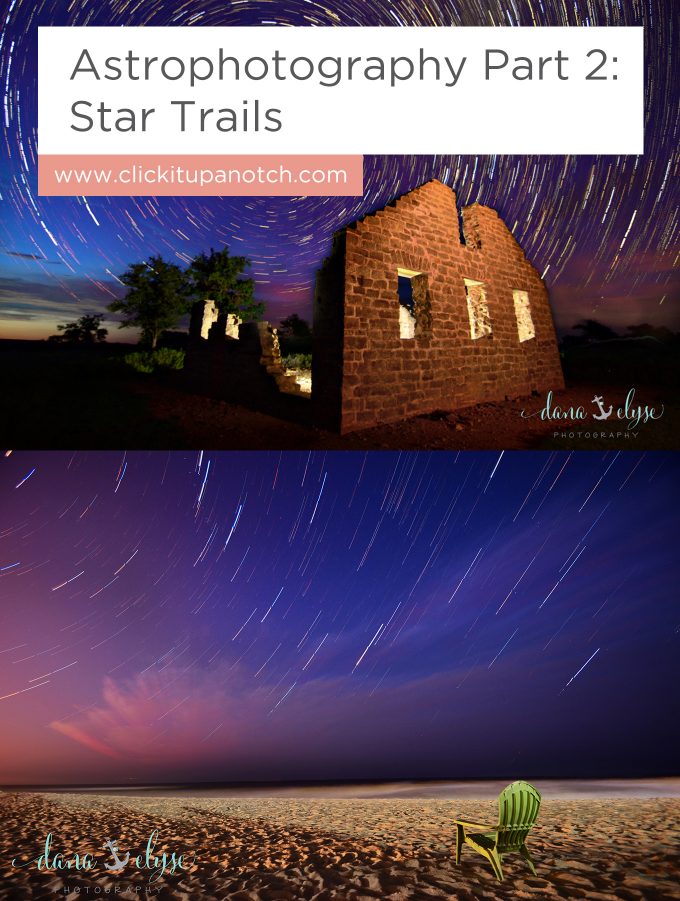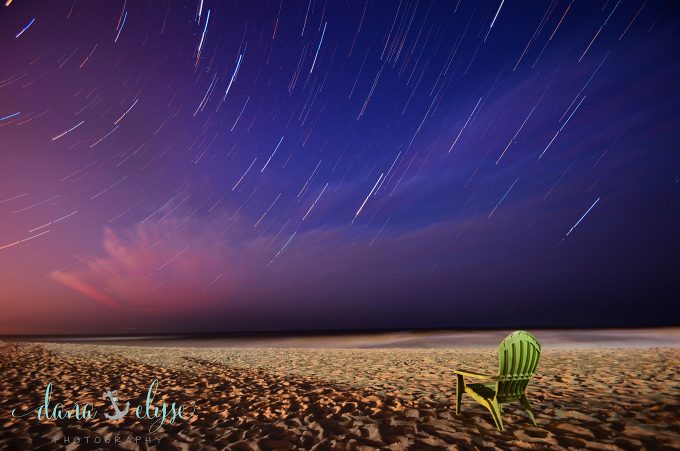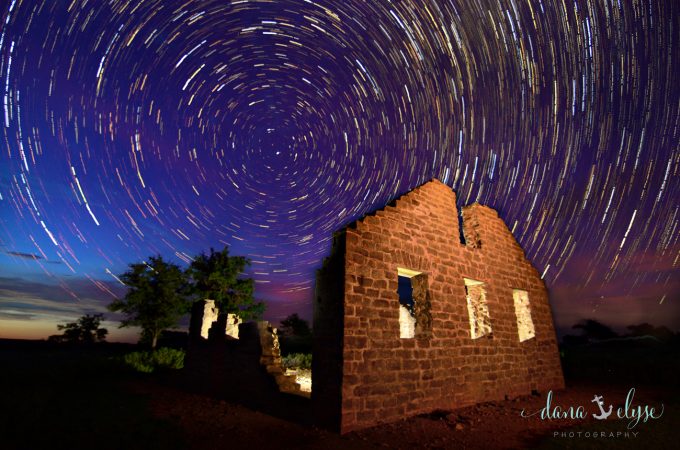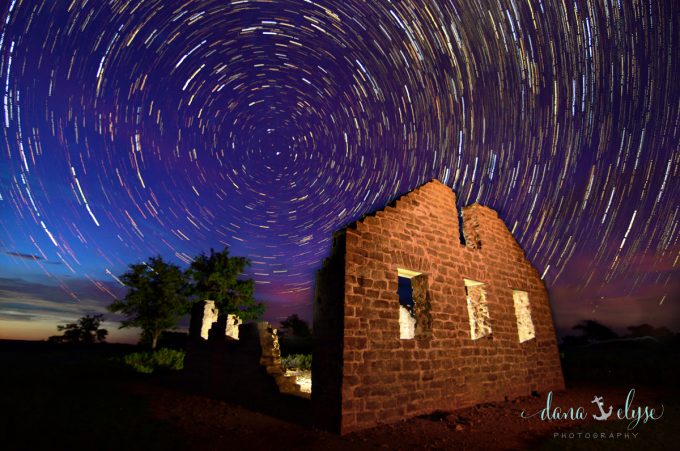I’ve always admired the dreamy nighttime images of beautiful night scenes with stars swirling in the sky above them, but always thought they were too complicated or I didn’t have the right equipment to do so. Turns out, I was wrong! You actually need very little, equipment-wise, but you will need some knowledge of the night sky.  Read more: Astrophotography Part 1: Basics and the Milky Way Star trails images can be made one of two ways; by taking one very long exposure (anywhere from 30 minutes to several hours), or by taking several, shorter exposures and stacking them using post processing software. I prefer the latter method, and for several reasons. If you are attempting one long exposure, several things can go awry and ruin your image. Someone could bump the tripod, a light source could enter your image (a car driving by, a person with a flashlight in the area, etc), your battery could die, etc. With several short images, if something should happen, you can just discard the one image and move on. Shooting star trails takes some patience, but the end result will be amazing! *This post contains affiliate links. Thank you in advance for supporting Click it up a Notch!
Read more: Astrophotography Part 1: Basics and the Milky Way Star trails images can be made one of two ways; by taking one very long exposure (anywhere from 30 minutes to several hours), or by taking several, shorter exposures and stacking them using post processing software. I prefer the latter method, and for several reasons. If you are attempting one long exposure, several things can go awry and ruin your image. Someone could bump the tripod, a light source could enter your image (a car driving by, a person with a flashlight in the area, etc), your battery could die, etc. With several short images, if something should happen, you can just discard the one image and move on. Shooting star trails takes some patience, but the end result will be amazing! *This post contains affiliate links. Thank you in advance for supporting Click it up a Notch!
-
No.01Scout and Set Up
You’ll want to begin by scouting a dark location with an interesting foreground or horizon. Once there, set up your tripod, and using the information I gave you in the first article, get your camera focused and proper exposure made. If you want to create an image where the stars circle around a single point of light, you need to be sure to aim your camera at Polaris (or the North Star). You can use a night sky app to help you find it, or just look for the last star in the handle of the Big Dipper. That star will not move, but the rest will appear to circle around it. If you want more of star streaks in the sky, aim away from the North Star.

-
No.02Shooting
After your camera is set and taking a properly exposed photograph, you’ll want to use your remote or shutter release to take continuous 30 second exposures for anywhere from a half hour to several hours. This is where the patience comes in! Using a slow shutter speed is key.
The more exposures you can take, the brighter and more well defined your star trails will be once they’re processed/stacked. After every few images, I like to wait a few seconds to allow the camera sensor to cool down. When you are using your camera constantly in this manner, the sensor can get overheated and create hot spots on your image. Allowing it time to rest will eliminate this problem.
*Alternatively, you could purchase an intervalometer to hook up to your camera to automatically take the pictures at set intervals, or some cameras now come with a built in intervalometer – check your camera’s manual to see if you have one!
A properly exposed photograph will be bright enough to see the stars, but not overly bright as to illuminate the landscape.
-
No.03Editing
Now that you have your images, it’s time to process them to achieve that swirly star look! You can do this in photoshop by layering all of your images, but this can be very tedious; especially if you have several hundred! There is a free, easy-to-use alternative though; a program called StarStax. The program is very basic and easy to learn, and it does an amazing job of stacking those hundreds of images in a matter of seconds! Be sure to read the ‘features’ section of their website to learn all the different ways to process your images, and don’t be afraid to play around! After I’ve stacked the images in StarStax, I bring it into Photoshop or Lightroom and do my basic exposure/saturation/etc edits.
-
No.04A few important notes
-Protect your tripod! If you accidentally bump it, your images won’t stack properly in the end. -Make sure you’re shooting with a full battery and have a spare on standby – constant long exposures can drain a camera battery quickly! -Humidity in the air can hinder your ability to get crystal clear images. It’s best to shoot on a dry night. -Depending on how bright the sky is, if there is any trace of a moon, etc, just the long exposure itself might be enough to illuminate your subject or foreground. Other times, you may want to take your flashlight and ‘paint’ the light onto your subject matter. This may take a few tries to get just the right amount of light, so experiment! I usually like to do the light painting on the first and last image in the set and include them when I’m stacking them in StarStax. This is all very trial and error as many environmental factors as well as your camera/lens combination can alter how bright your foreground or subject is. -Practice, practice, practice! My first star trails picture came out awful! But I kept on trying!
That’s about it! Go out, explore some new areas and have fun pushing your creativity to the limits! Dive even deeper into photographing the night sky with this video.


 A properly exposed photograph will be bright enough to see the stars, but not overly bright as to illuminate the landscape.
A properly exposed photograph will be bright enough to see the stars, but not overly bright as to illuminate the landscape.






No comments yet.